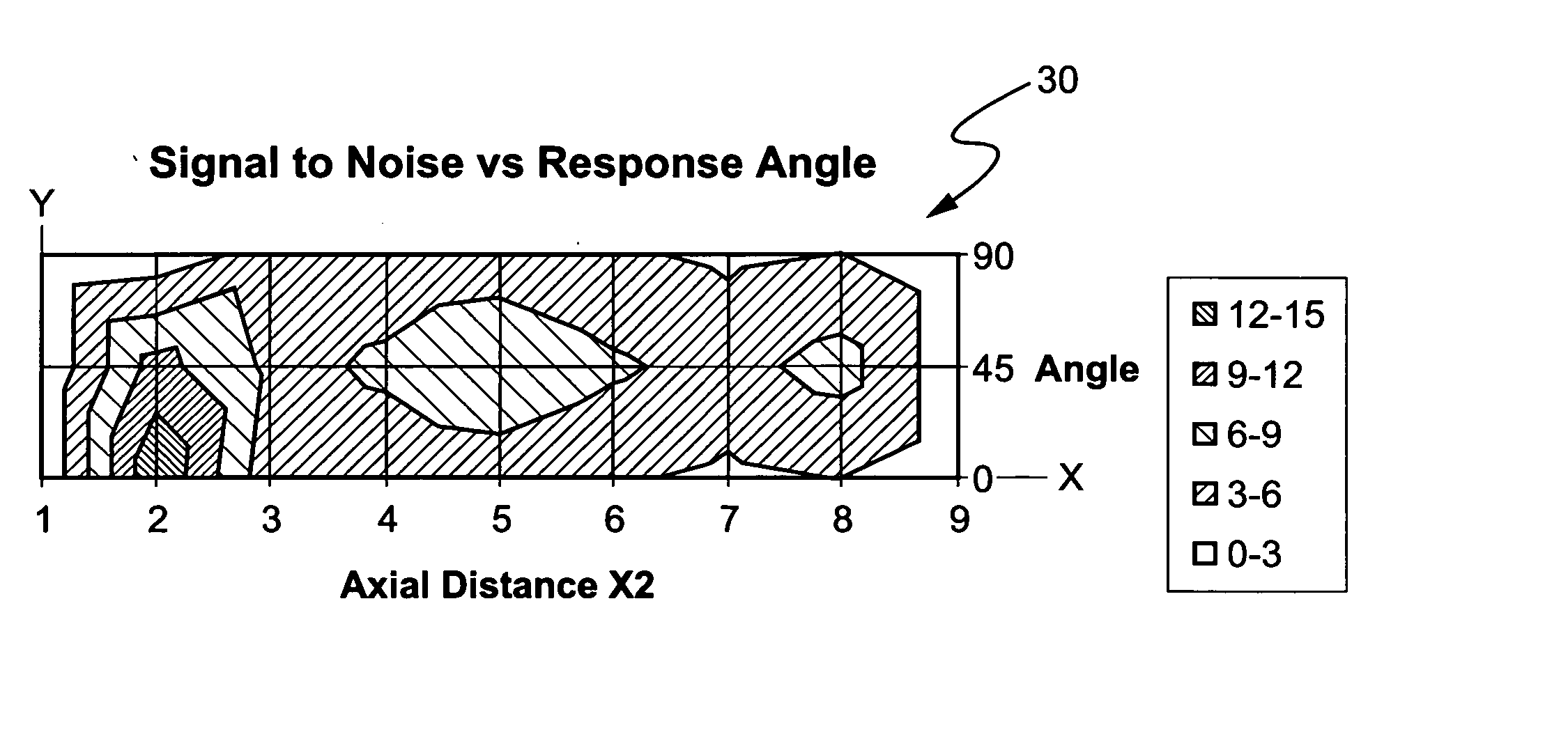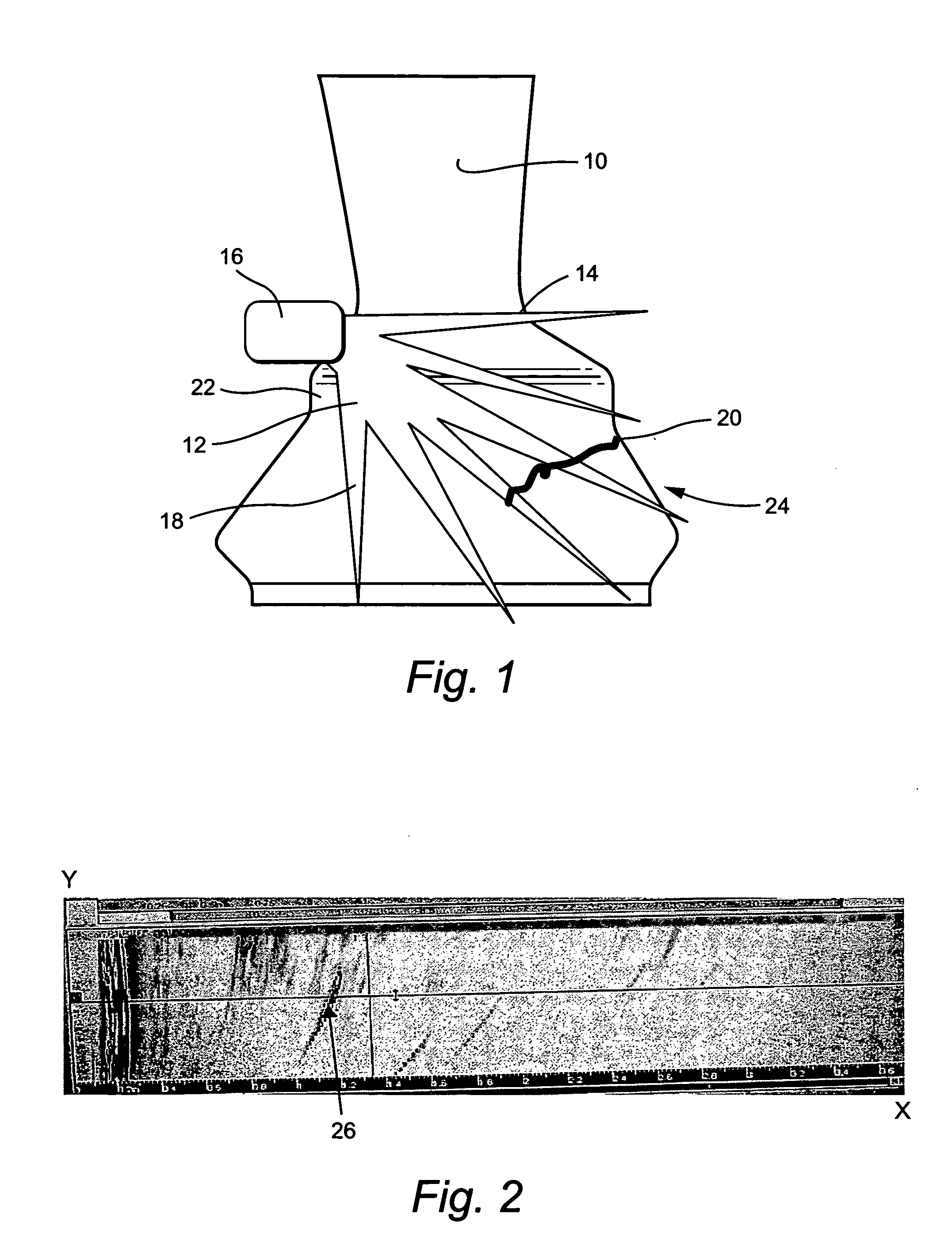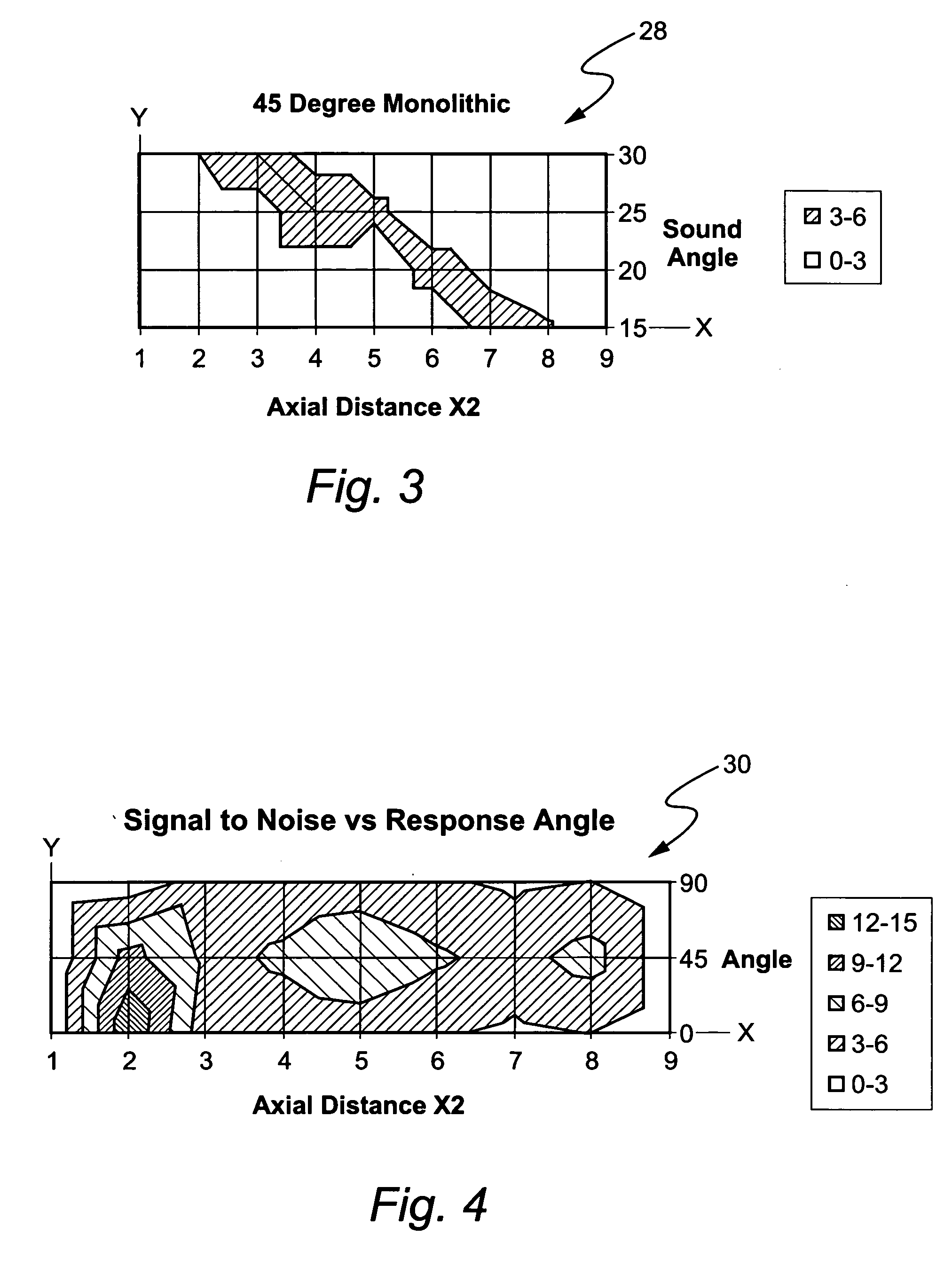Method of ultrasonically inspecting airfoils
a technology of ultrasonically inspecting airfoils and airfoils, which is applied in the direction of vibration measurement in solids, instruments, specific gravity measurement, etc., can solve the problems of inability to test airfoils of machines, and inability to achieve either of these tasks
- Summary
- Abstract
- Description
- Claims
- Application Information
AI Technical Summary
Problems solved by technology
Method used
Image
Examples
Embodiment Construction
[0015] The present invention is directed to a method of nondestructively examining machine components, such as airfoils, for defects without removing the components from the machines of which they are a part. The method of the present invention uses well-known phased array ultrasound technology to nondestructively examine the components for defects, and is applicable to all types of components, in that it can be used to test any geometry where the surface of the component through which the ultrasonic sound beam enters changes in angle with respect to the part of the component to be examined for defects.
[0016] The method of the present invention is applicable to both longitudinal wave and shear wave techniques used to test components without removal of them from the machine containing them. The angle at which the ultrasonic beam enters a component to be examined is varied by the transducer probe emitting the beam. The phased array ultrasound allows an inspector to steer the ultrason...
PUM
| Property | Measurement | Unit |
|---|---|---|
| angle of incidence | aaaaa | aaaaa |
| beam angle | aaaaa | aaaaa |
| scan angle | aaaaa | aaaaa |
Abstract
Description
Claims
Application Information
 Login to View More
Login to View More - R&D
- Intellectual Property
- Life Sciences
- Materials
- Tech Scout
- Unparalleled Data Quality
- Higher Quality Content
- 60% Fewer Hallucinations
Browse by: Latest US Patents, China's latest patents, Technical Efficacy Thesaurus, Application Domain, Technology Topic, Popular Technical Reports.
© 2025 PatSnap. All rights reserved.Legal|Privacy policy|Modern Slavery Act Transparency Statement|Sitemap|About US| Contact US: help@patsnap.com



